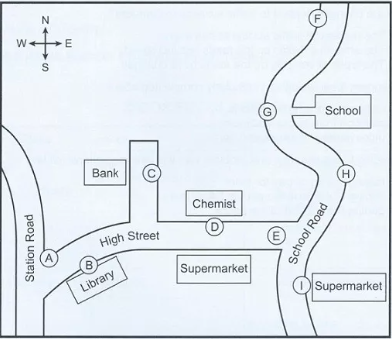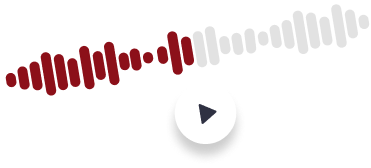While giving language proficiency tests, it is important to put extra effort into several topics such as IELTS listening map vocabulary. Knowing the correct words which you have to use in this task is important. Thus, this blog will help you know what this topic is, common words to be used in two types of this task, and essential phrases to use. Moreover, you will also get a sample to better understand the map vocabulary for IELTS exam. Thus, read this blog till the end, use the tips given, and score well on the exam.

Table of Contents
While attempting the map task, it is important to use some effective and accurate IELTS listening vocabulary. These words are important to use because they make your response more accurate, deliver your ideas with more clarity, and make it easy for the examiner to understand your response. So, you must work on improving your vocabulary and score well. Moreover, there are two types of tasks in the map question, which are direction and location-based. So, it is important to know that the IELTS listening map vocabulary for both tasks are different, as you will read below in this blog.
There are several IELTS map vocabulary words that you can use in your responses. Moreover, as discussed above, the words are different in the two types of maps. So, read below to learn about such words based on direction and location questions.
Some of the common IELTS listening map vocabulary for direction-based questions are:
Some of the common IELTS vocabulary words for telling location in the listening section are:
These are some of the IELTS lexical resources that you can use in the listening map task. It will help you to draft a better response, leading to good marks in the following task.
Several phrases in the IELTS listening map task are important to describe a location or direction. So, go through the sentences below to know how you can frame a phrase to describe the map with accuracy.
1. The studio is on the second floor, over the main hall.
2. The faculty lounge is in a remote corner, past the administration offices.
3. You can find the science labs in the newly finished wing, off the parking lot.
4. The Student Union building is in the middle, directly across from the main library.
5. The bookstore is located on the first floor of the student union.
6. The computer lab is downstairs in the basement, stairs down from the history department.
7. The language center is upstairs on the second floor, over the campus green.
8. The office of career services is near the entrance to the administration building.
9. The security office is located at the main gate, where you enter the campus.
10. The alumni center is in the old Victorian building, off campus.
11. The university press is in another building, behind the humanities building.
12. The research center lies on the north border of the campus, ringed by trees.
13. The athletic fields lie beyond the dormitories, towards the river.
14. The tennis courts are situated adjacent to the track and field stadium.
15. The swimming pool complex is adjacent to the sports arena.
16. The student health center lies on the west campus, off the nursing school.
17. The music department takes up a building with a distinctive curved roof, off the main road.
18. The drama workshop is backstage in the main auditorium.
19. The photography studio is located in the art department building, next to the ceramics lab.
20. The campus radio station transmits from a small studio to the cafeteria.
These are some of the phrases involving the IELTS listening map vocabulary. So, carry a similar essence in your responses and score well in the exam.
Go through the samples below to understand better the IELTS listening map vocabulary. Read the answers and see how these words are used in the response.
| Vocabulary | Meaning |
|---|---|
| Opposite | situated on the other or further side |
| Across The Road | move or travel to the other side of it |
| Same Side | stay on the same side of the road |
| Before You Get To | before reaching a specific location |
| Junction | a point where two or more things are joined |
| Dead End | an end of a road or passage from which no exit is possible |
| Leads Off | beginning or starting |
Explore 100+ IELTS Listening Practice Tests with Answers to Prepare for Listening Section
Don’t Miss Out| Vocabulary | Meaning |
|---|---|
| Left-hand side | refers to the location on the left |
| Right-hand side | refers to the location on the right |
| Pass through | moving from one place to another |
| Turn right | to change direction by turning 90 degrees to the right of your current direction of travel |
| In front of you | something is situated or positioned at the front of the viewer or the object being described |
| On the other side | opposite to the location described |
| Beyond | on or to the farther side of |
| Along | from one end to or towards the other end of something |
| Corner | a place where two lines, edges, surfaces or roads meet |
| Go straight | to move in the straight direction from a starting point |
| Beside | at the side of, or next to somebody/something |
| To your right | something on your right side |
These are the samples of the task with some important IELTS listening map vocabulary. So, go through them to learn these words and use them accurately in your responses.
Several tips will help you ace your score in the IELTS map task. These are:
1. Go through the instructions properly before directly jumping into the task solving. Understand what the question is asking, and then give the accurate answer as per the requirement.
2. Imagine yourself on the map, as it will make the directions or location more realistic for you, and you will be able to predict the location better.
3. Take the help of the IELTS listening practice test and understand what type of questions will be asked in the exam. Moreover, it will also make you familiar with the exam syllabus and pattern of the exam.
4. Avoid distractions while preparing for the exam and also when you are taking the test. This may lead to a loss of focus and unnecessary mark deductions.
This was all about the IELTS listening map vocabulary. Here, you get to know what these words are and how they can be used in the map task of the listening section. Moreover, you can take the help of the sample given above to know the accurate way of solving these questions. Apart from the listening section, IELTS speaking vocabulary is also important to score well in the overall exam. So, reach out to our academic experts and prepare well under their guidance. So, prepare well and make your dream of studying abroad a reality.
1. How Common Are Maps in IELTS Listening?
Maps are very common in the IELTS Listening test, particularly in Section 2.
2. Which Is the Hardest Listening Test in IELTS?
The most difficult section in the IELTS Listening test is Section 4. This section features a monologue on an academic subject, making it the most complex for many students. However, it also depends on an individual and their skills.
3. How Can I Get 8.5 in IELTS Listening?
To score 8.5 in the IELTS listening section, you must practice more, solve mock and practice tests, work on your vocabulary, and stay away from any kind of distractions.
4. How to Answer Map Questions?
To effectively answer map questions, focus on listening for important directional cues and important relationships described in the audio, and then accurately label those locations on the map.
5. What Is the Hardest Part of IELTS?
The most challenging part of the IELTS exam for many test-takers is the Writing section because of the involvement of intense grammar and vocabulary.

We are available in :
BangaloreAhmedabadJaipurHyderabadKeralaPuneChandigarhMumbaiGurgaonChennaiKolkataTrivandrumNoidaKochiCalicutKottayamKollamThrissurIndoreUdaipurdisclaimer:logos and other registered trademarks of universities used on this platform are held by their respective owners. Gradding does not claim ownership or association on them, and their use is purely for informational and illustrative purposes.






